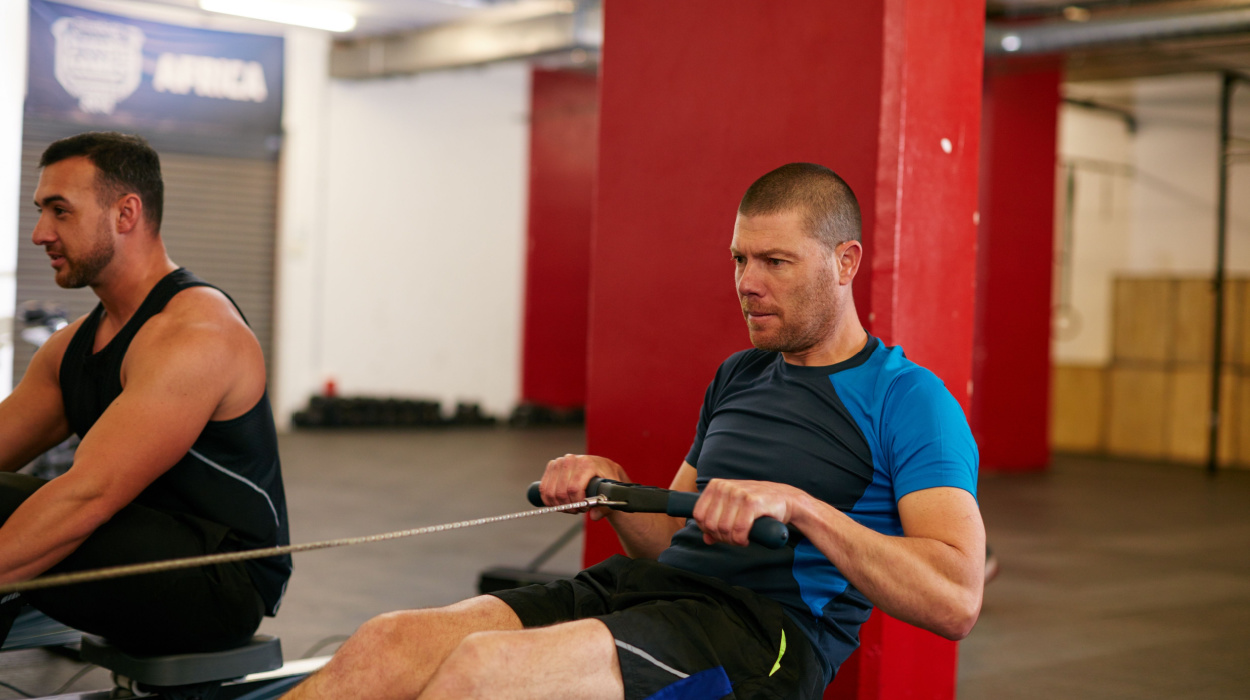Have you ever scrolled through social media or encountered ads showing impressive, transformative before and after images? You may have researched these results and come across different approaches from individuals promising to help you get ripped fast. Achieving fat loss while building muscle requires a focused approach, especially when trying to get results quickly.
If you’ve wondered how to get ripped in 3 months, stay focused on what works and how to achieve results safely. Let’s dive in and explore some great ways to trim body fat, build muscle mass, and maintain a healthy balance.
How To Get Ripped Fast In Three Months
Getting ripped over a relatively short period of time requires careful planning and consistent motivation. Taking the right approach can help you develop healthy habits while maintaining your overall well-being. Some helpful areas to consider while establishing your routine include:
- Establishing your diet plan.
- Incorporating cardiovascular training.
- Considering high-intensity interval training.
- Developing your weight training schedule.
- Choosing supplements wisely.
Burning fat while building muscle requires careful planning. Consulting your doctor and meeting with a certified personal trainer before making changes can ensure you approach lifestyle changes safely.
How To Get Ripped In 3 Months

No matter where you are on your wellness journey, there are very important basics to remember to keep the ball rolling or begin making healthier choices. These basic ideas are:
- Your diet is central to your well-being: Closely monitoring your diet helps create a calorie deficit that will help reduce body fat percentage and body weight. A balance must also be maintained to ensure you receive essential nutrients, including the components needed to build muscle mass.
- Exercise and training methods should be focused and consistent but not over-extended: Focusing only on weight training while neglecting exercises like cardio workouts leads to missed opportunities for losing fat. Lifting weights that push your boundaries too quickly can lead to improper form, isolating muscles more than intended, and injury. Form comes first; adding more weight should only be considered when reps are consistently completed appropriately.
- Stress management is crucial: Managing your mental health allows you to stay consistent with your routines and stay motivated. Stressors are a part of daily life. Your ability to manage stress can help you get adequate rest and avoid behaviors that may sabotage your efforts.
These core concepts can be the foundation of your plan. Building more muscle mass while simultaneously promoting fat loss requires a careful nutritional balance and an aggressive exercise regimen.
There are some helpful strategies to expand on these concepts, helping you get started and stay on track. Implementing these plans will help you increase lean muscle mass and maintain low body fat while promoting a healthy balance.
Establish Your Diet Plan
If you are trying to burn fat and lose weight, burning more calories than you consume can help you achieve this. Track your overall intake of calories and the individual breakdown of macronutrients like protein, fat, and carbohydrates. This can complement your workout routine by keeping you in a fat-burning mode while still getting the required nutrients.
Targeting a weight loss of no more than 0.5%–1% of your body weight per week[1] has been shown to help you retain muscle tissue.
Getting plenty of protein[2] in your diet is important to retain and build muscle mass. Lean sources of protein that limit the amount of saturated fats are also helpful. Look for sources of healthy fats like salmon, olive oil, or avocados.
Limiting processed foods is also important because these provide a lot of saturated fat and simple carbohydrates like sugars. These can cause calories to add up quickly, making it more difficult to lose fat.
Focusing on sources of complex carbohydrates like whole grains and fiber[3] sources can stabilize your blood sugar levels and help you feel fuller longer. Whole grains are also more nutrient-dense, allowing you to maintain a healthy nutritional balance while limiting your total caloric intake.
Cardiovascular Training
If you are looking to gain muscle, cardiovascular exercises may not be your favorite exercises to perform, but they are important. When you are looking for improved muscle definition, fat loss is crucial. Cardio training provides an excellent way to lose fat[4] and maintain an overall caloric deficit for weight loss.
Aerobic exercise[5] has also been associated with some important overall health benefits. Numerous studies have shown an improved ability for muscle tissue to utilize available oxygen, which improves performance. There is also a significant association with lower risks of developing cardiovascular disease.
Many training regimens recommend maintaining cardiovascular exercises on a daily basis. This includes days when you may take a break from your weight training routine. For many individuals, this may be the aspect of training that requires the highest level of dedication.
High-Intensity Interval Training
An alternative way to achieve some of the benefits of cardiovascular endurance training is through high-intensity interval training or HIIT. HIIT is generally defined as moderate or intense exercise intervals targeting increased heart rate broken up by periods of relative rest. HIIT has been associated with lower rates of cardiovascular disease[6] and offers an excellent way to burn calories.
You can calculate your maximum heart rate by subtracting your age from 220. For vigorous-intensity exercise like HIIT, try to aim for 77%-93% of your maximum heart rate during your intervals.[7]
HIIT can be implemented similarly to cardiovascular training. This means training is often recommended daily, even on your weight training regimen rest days.
Weight Training
While weightlifting and resistance training both improve muscle strength and power, research has shown a slight advantage for weight training[8] in these areas. Try to continually push your body beyond previous limits while allowing for adequate rest and recovery while your body adapts. No specific regimen[9] has been identified as clearly superior for muscle growth in clinical research.
A good 3-month workout plan alternates between upper body and lower body, maximizing volume. Volume is defined by the weight lifted multiplied by the number of reps and the number of sets. It is also important to continue with a consistent cardio training program.
Working with a certified athletic trainer can help you ensure you are using the correct form and progressing safely.
Supplements

Adding a metabolism booster or a fat burner can be beneficial if approached correctly. These products often contain stimulants like caffeine and may give you an energy boost to help you with workouts. It is important to confirm with your doctor whether these are safe and effective for your individual needs.
Within the over-the-counter supplement market, there is also a lot of potential for misleading labels. Many products marketed for weight loss and muscle building do not contain the amounts of ingredients shown on the label. They can sometimes contain entirely different ingredients,[10] which can potentially be dangerous.
Take the time to research brands. Products that submit to independent third-party testing and are produced in good manufacturing practice-certified facilities are a good place to start.
Protein powder supplements may be among the most helpful supplements to consider. Whey protein will provide all of the essential amino acids your body requires to maintain and build muscle.
What Does Being Ripped Mean?
It can be very easy to compare ourselves to others. There are different body types, strengths, and limitations that may depend on many factors. Getting ripped may ultimately mean different things to different people.
A helpful way of thinking about this would be to approach your journey as becoming the best possible version of yourself. We all want to look good, feel great, minimize fat, and improve lean body mass.
When you do this, you may not look exactly like the people in the pictures, and that is okay. You look like the best version of yourself because you are making healthy choices and taking care of your body.
Can You Get Ripped In Three Months?
Losing fat in a healthy manner while maintaining or building muscle mass can take time, especially considering the recommended rate of weight loss is about 0.5%-1% per week.[1] Staying consistent with your exercise regimen and maintaining mindful, balanced nutrition will increase the likelihood of achieving noticeable results.
Three months is certainly enough time to develop beneficial habits. You may also notice significant visible results during this time frame.
Tips To Get Ripped Faster
Consistency is the key to getting ripped faster. There may be certain aspects of your routine that are more enjoyable than others. Maintaining the full approach is what helps you achieve your goals with minimal setbacks.
As you continue your journey, it is important to:
- Continue to track your diet: Minimize processed foods, sugars, and saturated fats. Focus on lean sources of protein like fish, poultry, and legumes.
- Do not skip cardio training: If you want to know how to get shredded, your focus should be on more than just building muscle. Cardiovascular training will help you burn fat and increase muscle definition.
- Do not try to do too much too fast: If you get hurt, you will not be doing yourself any favors. Use a spotter, work with a trainer, and make sure you are performing weight-lifting exercises safely.
- Limit alcohol: Drinking too much can sabotage your efforts by directly introducing empty calories and disrupting your routines. Alcohol can make it difficult to maintain consistency.
Conclusion
Setting your sights on increasing lean mass, burning fat, and increasing muscle definition can allow you to build some excellent habits. Three months is long enough to see results, provided you stay consistently motivated.
Trying to do too much too quickly can lead to imbalances. Cutting calories without maintaining adequate nutrition can result in difficulty maintaining muscle mass and opens the door for health concerns. Progressing through increased weights too quickly during your lifting routines can result in injury.
Take the time to develop a plan incorporating balanced nutrition, cardiovascular training, and responsible weight-lifting progressions. Don’t worry about comparing yourself to others; be the best version of yourself.
It is always best to consult your doctor before making major changes to your diet and exercise routines. Working with a personal trainer can help ensure you are performing exercises correctly and minimizing the risk of injury.
Frequently Asked Questions
Getting ripped requires a delicate balance between losing fat and building muscle. Cutting calories while ensuring adequate nutrition takes careful planning. Exercise routines need to be consistent and require maintained motivation.
Getting ripped may ultimately mean different things to different people. Three months is long enough to establish healthy routines and see visible results from your efforts if you maintain consistency.
Developing and maintaining a good cardio training routine is a helpful piece of the puzzle. Cardio can help you maintain a caloric deficit and burn fat. This can promote improved muscle definition.
 Evidence Based
Evidence Based
